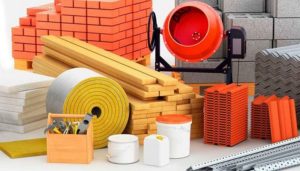Timber is an incredibly adaptable material. Because of its fire resistance, strong structural features, insulating properties, and affordability, timber is utilised as a construction material and building supplies Melbourne.It is one of our oldest construction materials, naturally creating long, thin components perfect for framing. Timber products for a wide range of applications have been made possible by recent advancements in processing and technology. Timber begins to compete with steel and concrete as technological restrictions are overcome. These trees are further divided into softwood and hardwood varieties. The names “softwood” and “hardwood” do not accurately describe the softness or hardness of certain woods. Hardwoods are found to be softer and lighter than softwoods in some cases. The major distinctions between hardwoods and softwoods are botanical in nature and relate to how the tree grows.
In terms of sustainability, wood is hard to beat as a one-of-a-kind renewable building material. Trees absorb dangerous carbon dioxide as they develop, storing it in the wood rather than releasing it into the atmosphere. This is why trees should only be destroyed once they have reached full maturity and have ceased to absorb CO2, enabling the ecosystem to benefit completely. You can be confident that the wood you’re using was harvested sustainably when forests are maintained properly by owners who put more in than they take out.

The total amount of energy necessary to manufacture a product or service is referred to as embodied energy. This includes energy used in the construction sector for building, production, and transportation, which generally accounts for 30-50 percent of a project’s total carbon footprint. Converting trees into lumber for construction needs extremely little energy, and the building process generally only a quarter of the truck deliveries required by concrete. Timber has the lowest embodied energy rating of any popular construction material and building supplies Melbourne due to these characteristics.
A hardwood floor beam, for example, consumes about 80 megajoules (mj) of energy per square metre of floor space and produces 4kg of CO2. A square metre of floor area supported by a steel beam consumes 516 MJ and emits 40 kilogram of CO2, whereas a concrete slab floor consumes 290 MJ and emits 27 kg of CO2. Timber is extremely sturdy and durable, ensuring that quality is not compromised even when building speed is taken into account. Structures made of wood may survive hundreds of years and are less costly and easier to maintain than other materials.
The material’s intrinsic characteristics add to its environmental credentials. Blackbutt Timber Melbourne includes tiny air spaces that inhibit its capacity to transmit heat as a natural insulator. This reduces the amount of energy required to heat and cool dwellings, resulting in reduced usage of fossil fuels. In comparison to brick buildings, timber frames provide greater area for insulation, improving thermal efficiency. Timber is lightweight and flexible, making it simple to handle and install. This allows for a speedier, less costly, and less disruptive construction process, making it the ideal material for brownfield site construction and urban development – as well as for creating sites that are quieter, calmer, and cleaner.

